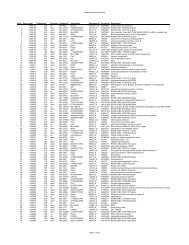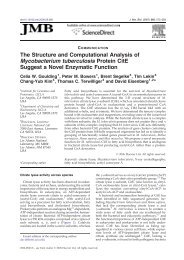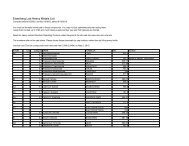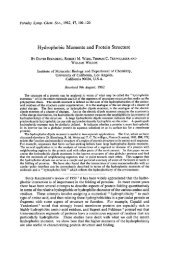Shimming: Theory and Practice - UCLA-DOE
Shimming: Theory and Practice - UCLA-DOE
Shimming: Theory and Practice - UCLA-DOE
You also want an ePaper? Increase the reach of your titles
YUMPU automatically turns print PDFs into web optimized ePapers that Google loves.
Since the sample is not centered at z=0, but at z=z 0 , z becomes (z + z+ 0 )<br />
<strong>and</strong> ΔB 0 =cz 2 becomes:<br />
ΔB 0 =c(z + z 0 )2 = c(z 2 + 2zz 0 + z 02 )<br />
Z 0 is a constant, so 2zz 0 is linear, <strong>and</strong> the z 2 shim has a z component.<br />
Many other flaws can lead to this sort of thing. Design or manufacturing<br />
flaws in the shim coils, shim coils not perfectly positioned, etc, all<br />
contribute to mixing of shims. If you extrapolated this example to three<br />
dimensions <strong>and</strong> 28 shims (on our systems), you can see why shimming<br />
is so difficult.<br />
Manual <strong>Shimming</strong><br />
Once a particular probe in a particular magnet is shimmed, most of the shims<br />
dont need adjustment from sample to sample. Its primarily the z shims that<br />
change.<br />
Why? The radial extent of our samples is very small <strong>and</strong> theyre quite radially<br />
symmetric. Also theres very little radial change from sample to sample. In<br />
contrast, the samples are quite long in the z direction so the shimming is<br />
more important (<strong>and</strong> harder). And theres a lot of variation in length <strong>and</strong><br />
centering from sample to sample.<br />
Although each shim produces several harmonics, making life miserable for<br />
the shimmer, each shim is contaminated by lower order shims of the same<br />
parity (z 3 is mostly contaminated by z, <strong>and</strong> z 4 by z 2 , etc). This makes it easier<br />
to find effective shimming strategies.











